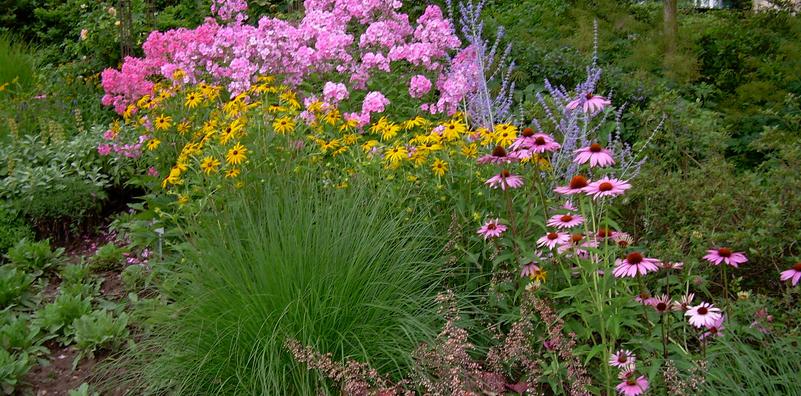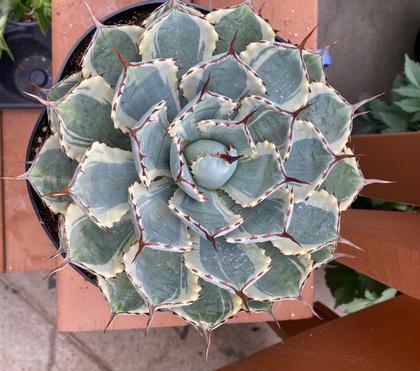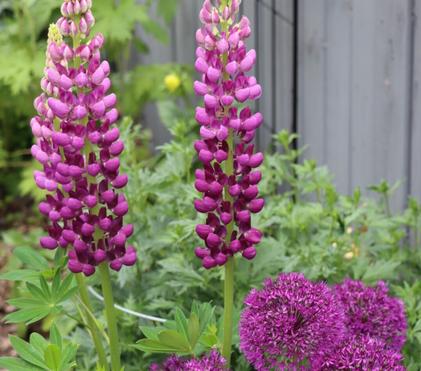Common Gardening Challenges and Solutions
Even the most careful and experienced gardener will occasionally find plants that are weakening or a crop teeming with a troublesome pest. No garden is immune from pests and diseases, and learning to recognize the symptoms and determine appropriate controls is your best defense.
If you are struggling with any of these challenges, don’t let it discourage you from trying again. You are not alone in this, we are all gardeners and we are all learning all the time. These are some of the most common challenges that all of us face:

Planting Too Early
We’ve all been there. We’ve endured a long, cold winter and we’re eager to work on our “happy place”. What can it hurt to begin planting early? As it turns out, quite a lot.
Planting too early can cause stunted growth, wilting, surface pitting, foliage necrosis and increased susceptibility to disease. Too little light and low soil temperatures can stunt plant growth and prevent root development. So what is the magic number?
When night time temperatures begin to average 10 degrees Celsius, it’s the perfect time for filling the garden with those tender annuals. My father-in-law (who was an amazing gardener) always said to wait until after the May long weekend, and he was a very wise man. One year Edmonton’s temperatures didn’t get above 10 degrees until May 16th, then not again until May 31st!
See Garage Syndrome is Very Real
Proper Plant Spacing
Spacing plants appropriately is one thing that many of us struggle with for our entire gardening lives – myself included. When we start planting our bedding plants in the garden, it seems like the recommended spacing is way too generous. But you (and I) must resist.
Having plants too close together reduces air flow, cause lower yields at harvest time, require more watering, and make it easy for pests and disease to spread through the garden. If your plants were too crowded last year, take a ruler with you this year when you plant, or use the width of your hand as a guideline. An adult hand width is generally between 3 and 4 inches wide.
Buying Too Many Plants
All of us fall victim to this once in a while. It’s easy to get carried away and “too many plants” is different for everyone. When it starts to be difficult to care for them simply due to the sheer amount of them – that is too many plants.
In a perfect world, you would know the size of the space you’re going to plant and have a plan to determine what you want to grow. Think about sun exposure (full sun, part sun or shade), space and soil (clay, loam or sandy). We’ve all made impulse buys, but if you arm yourself with knowledge and read the labels, you will be practical about what you can realistically achieve and how well the design will suit you and your lifestyle.
Managing Weeds Before They Take Over
Weeds can colonize any garden quickly, and while weeding can be time consuming, it is a necessary job. Weeds can cut off your plants nutrition, causing them to become more susceptible to disease and insect infestation. This not only causes plants to wither, it also leads to abnormal fruit and bloom growth and color.
These are four secrets to help with weed management:
- Start early
- Do small sections
- Be consistent
- Utilize ground-cover plantings and mulch
How and when you weed is as important as why you weed. If you start early in the season, removing all the weed vegetation and roots, your weeds won’t have a chance to get established. The more regularly you weed, the more you’ll keep it under control. Don’t attempt to go out and weed the whole garden in a day. Choose a three square foot area and weed for 10 to 15 minutes a day.
Ground-covers are vigorous, low-growing plants that can be used as a living mulch, suppressing weeds by absorbing water and nutrients, blocking out light, and forming a physical barrier. Creeping Phlox, Creeping Thyme, and many Sedum, are hardy perennials for our climate that work well at choking out weeds, and have beautiful foliage and flowers.
Protecting Plants from Pests
Every gardener at some point in time has been discouraged after putting a bunch of effort into planting and caring for their garden, only to come out and find that pests have destroyed their hard work. Plants are naturally attacked by pests and diseases, but there are practical steps you can take to minimize damage and keep plants safe.
Plants are not helpless and have their own natural defenses to help them fend off and recover from pests and diseases. The trick is to help your plants help themselves. Tending to their every need can keep them from growing strong and healthy. If your garden was attacked by pests last year, spend some time researching the bugs you struggled with and have a strategy for dealing with them this year.
Pests have to find your plants before they can attack them. You can disguise vulnerable crops in mixed planting plans (or intercropping) making it more difficult for pests to locate their targets. Remember that the pests that feed on your plants are all prey to other organisms that you can encourage in your garden. They are your allies, so provide food and basic habitats for them. Include flowers for beneficial insects in your plantings, ponds for slug-eating amphibians, and nest boxes for birds.
Identifying and Treating Plant Diseases
Your best defense is to check plants regularly and act quickly. Symptoms of plant diseases are often easy to spot, so watch for weak growth or discolored or distorted leaves, flowers and fruit. Some plant diseases, like bacterial leaf spot and powdery mildew, are common and are typically caused by excess moisture. And some diseases, like stem rot, are more likely to happen in very hot weather.
After properly troubleshooting an ailing plant for potential causes of plant stress, cut out all infected plant parts in order to prevent further spread. Disease spreads via wind, water, contaminated soil and insects. Treat the remainder of the plant with appropriate remedy or fungicide, and alleviate poor air circulation or crowding.
Overwatering or Underwatering
This is a balance that can be hard to achieve, and it’s one of those gardening skills that takes practice. Both overwatering and underwatering could be detrimental to your plants.
Feeling the leaves and the soil is the very best solution to check your pots and gardens - every two days during cool weather and every day during hot weather. If the leaves feel dry and crispy, you are underwatering. If they are soft and droopy, you are overwatering. Feel the soil with your hand. Dry and crusty soil indicates underwatering. If it’s dry an inch down, you need to water. On hot days you may need to water potted plants every day. Early in the season, when your plants are still babies, it’s a good idea to check the soil every day since they’re much more susceptible to water stress.
If your garden gets oversaturated in times of wet weather, and your plants drown or rot, consider relocating your garden if possible. If that’s not possible, you’ll want to invest in some significant soil amendment and possibly install drainage trenches to keep your garden from flooding.
Soil Lacking Nutrients
Many of the most common vegetables, annual, and perennial flowers we grow are heavy feeders. They can deplete of all its nutrients fast, especially in pots.
In the short term, fertilize your plants consistently through the summe, especially your heavy feeders like tomatoes, peppers, and Astilbe that need tons of nutrients. In the long term, amend your garden soil with compost, and consider following a crop rotation routine, so you’re not growing the same kind of plant in the same space and same soil every year.
Location, Location, Location
Some excellent advice about planning my garden was given to me many years ago to map my yard near midsummer. The location of the sun is most important and impactful during the summer for plants. In midsummer, the trees should also be fully leafed, so you can include the shade they create on the map as well. Draw a simple sketch of your yard including all major structures, fences, trees and large shrubs that could cast shadows and make 5 copies of this sketch. At 9am, 12pm, 3pm, and 6pm survey your yard, drawing in the areas that are shade at that time of day. Don’t forget to label the time of day on each map. Use the last copy of your sketch to combine it all together. Color code it with sunny areas, part sun/shade, and full shade. You can take a picture of it with your phone to have it with you at all times.
How To Plan A Garden – An Easy 4 Step Guide
One of the best things about gardening, no matter how long you’ve been doing it, you are always learning. Just like life, wonderful gardens take years to develop, and are continually a work in progress. Each garden is unique and specific, but we all experience similar challenges and triumphs. We hope these solutions can be of help to you. Happy Gardening!

